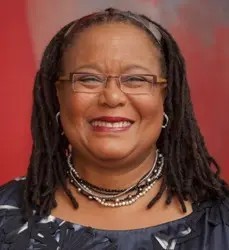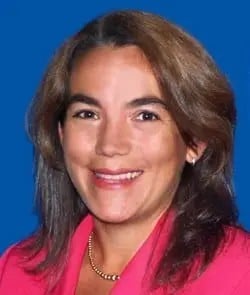Career Profile: Become a Faculty Member at Doctoral or Research Institutions

The faculty member at doctoral/research institutions career at a glance
Education: PhD or master’s in physics, including physics education research, or related field
Additional Training: Postdoc in physics field, and substantial teaching experience
Salary: Starting $45,000 - $105,000
Outlook: Fewer than 20% of graduates in physics will hold permanent tenure-line faculty positions, while an additional 20% may find non-tenure track positions.
What they do
Physicists in academia wear many hats, often at the same time. Most academics in liberal arts schools spend time doing the following:
- Teaching and developing new courses, curricula and teaching methods
- Directing, conducting, and publishing research, usually in collaboration with undergraduate students and/or other scientists
- Mentoring and advising undergraduate students
- Seeking and obtaining funding for research
- Filling significant roles in administration and governance of departments, institutions, or professional societies, known as "service"
Education & background
The path begins with a bachelor's, master’s, or PhD in physics or a closely related discipline like engineering or mathematics, with a major emphasis in physics. This can include a degree in physics education research (PER).
While working on a PhD, which can take between four to 10 years, one gains the basic physics knowledge and technical know-how that forms the basis of a future career, and begins publishing the research conducted with one's research advisor(s).
Additional training
Most liberal arts institutions expect faculty to teach courses and direct undergraduate research, so colleges will be looking for evidence of an ability to do this successfully. Candidates should seek opportunities to teach physics and learn about science education. For example, these opportunities can include teaching assistantships or co-teaching responsibilities or attending teaching seminars/workshops. Candidates should also seek opportunities to build an expansive research network and learn an array of instructional techniques based on education research.
Some people may gain the needed experience within the PhD program, and move directly into a tenure-track position at a liberal arts college right after graduation. Others may prefer to first hold a postdoctoral position (appointments typically are two to three years), where they would take more responsibility for direction and publication of their research.
A third route is to teach for a year or so in an academic setting. Many colleges offer temporary instructional positions to replace faculty on leave, which could require teaching as part of a team or being solely responsible for one or more courses. Other post-graduation experiences such as an internship or job in the private sector, government, or science policy can broaden one's experience and make them a better candidate.
Graduate school and/or post-graduation positions of this type can also be helpful in establishing collaborations and networks that will benefit not only the faculty member, but also their future students.
Career path
Physicists in academia typically start as an assistant professor at an academic institution, either at a doctoral/research university, which tend to have more of a research focus, or a baccalaureate-granting institution, which tend to have a greater focus on teaching. At research universities, expectations for research, publications, and external funding are higher than at liberal arts colleges. The assistant professorship phase may last five to six years.
Assistant professors (APs) must demonstrate excellent teaching, research, and service to the institution. The institution will provide the environment necessary for success—space, equipment, physical and administrative infrastructure, mentors—while the AP will focus on generating ideas and bringing them to fruition in their research and in the classroom.
After five to six years and a very rigorous external and internal review, indefinite tenure may be awarded. Tenure carries the prize of freedom to pursue a physics career forever with a degree of independence unattainable in virtually any other setting. It also carries responsibility to work even harder to keep research current and vibrant, and to take on leadership roles. Pay may be much lower for tenure-track physics professors as compared to those working in industry or the government. You will work with young people and with cutting edge science every day.
Physics education research (PER) faculty may follow a similar path, particularly if they are within a physics department, but some PER faculty will be housed in units focused on education or on interdisciplinary research. Those working in teaching and learning centers, usually having studied PER, will likely have studied education or education research at some point in their career and may have served as instructional faculty in higher education.
Faculty positions are also frequently available at universities outside of the United States. Although taking such a position will require eventually learning the local language, the working language for most international research groups is usually English, and support is often provided to help new faculty learn the language. If you are interested in these types of positions, a good first step is to try to connect to international faculty in similar areas of research at conferences and through professional networks.
Interested in teaching and learning centers? Check out this resource: Professional and Organizational Development (POD) network.



